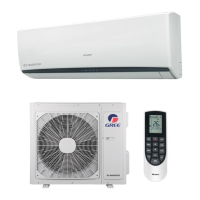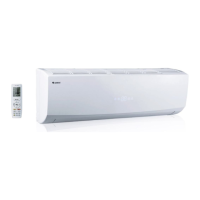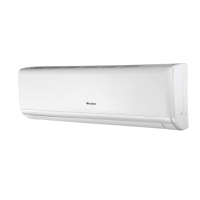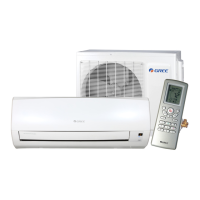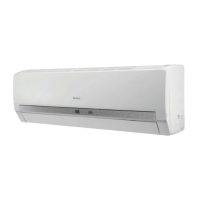Minimum requirements for service personal qualification
Unless there are further requirements, standards and legislation of the
country within which the equipment is installed may apply. Any techni-
cians that works on GREE hydrocarbon air–conditioners must be compe-
tent in the safe handling of flammable refrigerants, in addition to being in
possession of knowledge and skills to maintain best refrigeration installa-
tion and servicing practices!
There are already training activities in place for engineers, technicians and sales
staff to provide professional knowledge and skills for the handling of HC refrig-
erants and refrigeration systems operating with HCs.
Get trained and have your
“HC Refrigeration Professional” certification!
Basics in RAC
Knowledge of the basic SI standard units for temperature, pressure, mass, den-
sity, energy.
Understanding of the basic theory of refrigeration systems including the func-
tions of the main components in the system (compressor, evaporator, con-
denser, thermostatic expansion valves).
Understanding how to read a refrigerant flow chart and an electrical circuit dia-
gram.
The determination of non-condensable gases in the refrigeration system and
how to eliminate them.
The importance of the use of oxygen free dry nitrogen (OFDN) for system flush-
ing, leak test and strength test.
The elimination of humidity from the refrigeration system and how to recover or
vent HC refrigerant from a system.
Usage of tables and diagrams (log p/h diagram, saturation tables of a refriger-
ant, diagram of a single compression refrigeration cycle) and interpretation of
these tables and diagrams.
Knowledge of the basic operation of the following components in a refrigeration
system and their role and importance for refrigerant leakage prevention and
identification:
•
Temperature and pressure controls
•
Sight class and moisture indicators
•
Defrost controls, reverse cycle operation
•
System protectors
•
Measuring devices such as the pressure gauge manifold
•
Thermometer
•
Leak detector
•
Refrigerant charging devices
•
Vacuum pump
•
Oxygen free dry nitrogen cylinder and pressure regulator
Fault finding – analysis and repair.
•
Knowledge of flammable refrigerants
•
Risk analysis for the application of flammable refrigerant and properties of
flammable refrigerants
•
Electrical circuit assessment and repair
Get your Best
Practices
knowledge and
skills updated
for HC refriger-
ants and be
certificated for
these jobs!
Read More!
SAFETY CODE
OF PRACTICE
FOR
REFRIGERATING
SYSTEMS
UTILISING A2 &
A3
REFRIGERANTS
ISBN
1 872719 15 5

